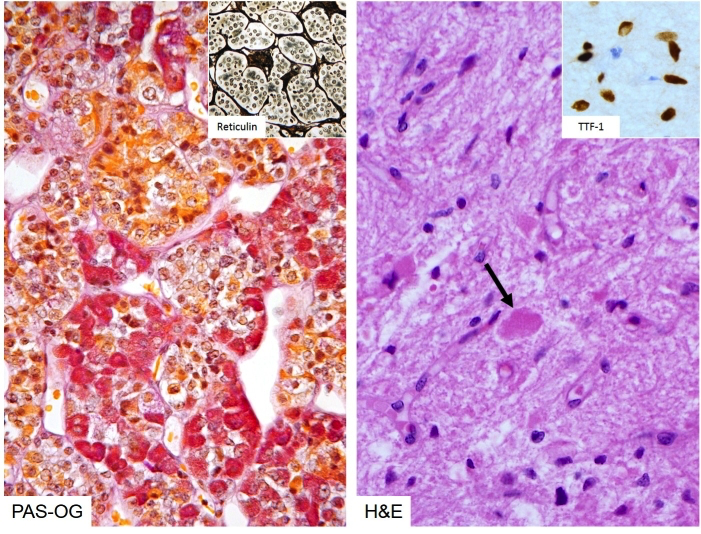
Figure 3a-8: The cytoarchitecture of the neurophypophysis (right) is strikingly different from the adenohypophysis, which contains the nested (inset, left) collection of endocrine cells (left). The neurohypophysis does not contain neurosecretory cell bodies; instead it is composed of specialised glial cells (pituicytes) that – unique in the human brain – express the TTF-1 (thyroid transcription factor 1) protein in their nuclei (inset, top right). The neurohypophysis contains the nerve endings of the oxytocin and vasopressin producing cells of the hypothalamus. Their large distended nerve endings can be identified on routine stains as so-called Herring-bodies (arrow), named after Percy Theodore Herring (University of Edinburgh) who described them in 1908 as the ‘physiologically active principle’ of the posterior gland.
